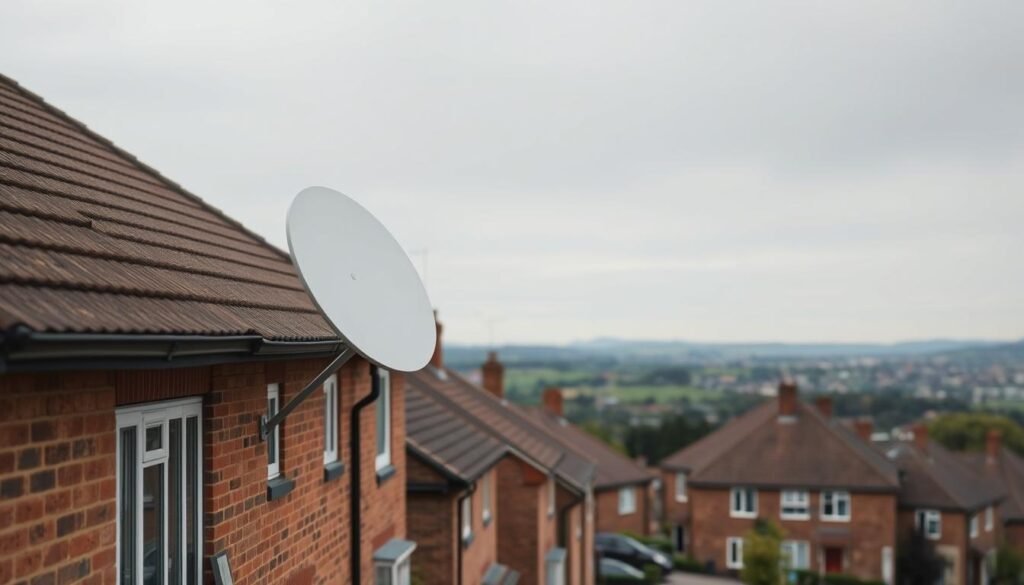Ever thought saying yes to a satellite dish could make you question your rights? This often happens after the installation is done. Landlords then wonder if they did everything right.
It’s key to check that all agreements cover such changes. Any improvements must follow safety rules and stay within legal tenancy terms.
Key Observations
- Confirm that any dish installation aligns with prior consents.
- Ensure safety standards are met before approving property changes.
- Seek expert guidance if you remain uncertain about legal obligations.
- Keep records of all permissions to protect your landlord rights.
Understanding Your Role as a Landlord
Being a landlord means making sure the property is legal and happy for tenants. You must think carefully about any changes. Most tenancy agreements say you can’t change things without permission.

Talking clearly with tenants is key to avoid confusion. Sometimes, tenants want to make changes. But these must fit with the original lease.
Checking safety and building rules is also important. It helps keep everyone safe.
Key Responsibilities under Property Management
Landlords usually fix big problems like leaks and wiring. Tenants look after their own things and small tasks. This way, both sides know what to do, reducing arguments.
Balancing Tenant Rights and Landlord Rights
Respecting each other is important. Tenants should ask before making changes. Landlords can say yes or no, based on safety or history.
Good agreements help everyone work together. They keep the property safe and happy for all.
Satellite Dish Regulations in the UK

Getting permission for a dish or changing your property’s look is key. Landlords must make sure any work is legal. The Town and Country Planning (General Permitted Development) (England) Order 2015 says some small changes don’t need approval. But, if there’s an Article 4 direction, you might need to apply.
If you’re unsure if you need permission, you can ask for advice. You’ll get a reply in 20 working days. Then, it can take up to eight weeks to get a lawful development certificate. The location of your property can influence the decision.
Landlords want to keep the building safe but also let tenants get TV signals. Talking things over can avoid problems and fines. Tenants should check with the council if their building is listed or in a conservation area.
- Ask the local authority for early advice.
- Confirm if permitted development rights apply.
- Seek written landlord approval before installation.
| Process | Timeframe |
|---|---|
| Informal Advice | 20 working days |
| Lawful Development Certificate | Up to 8 weeks |
| Planning Permission Decision | Varies, often 8 weeks |
| Retrospective Approval | Not guaranteed |
My tenant has installed a Satellite Dish with permission. What can I do?
Property owners often wonder what to do after a dish is installed. It’s important to have written approval from local housing bodies, like Barnet Homes. This ensures the installation meets agreed terms and doesn’t harm the building.
It’s wise to check if the installation affected any structural parts. Having a clear plan helps keep control over the property.
Landlords should check if a communal aerial exists. They should also see if the council has strict rules for exterior fixtures. This protects the property’s exterior and the landlord’s interests.
Assessing Your Legal Position and Tenancy Agreement
Landlords should review the lease to avoid disputes. Many agreements require written requests for improvements. They also mention if local authority consent or building regulations approval is needed.
- Verify that the tenant sought official permission where needed
- Check for clauses on maintaining building safety and appearance
- Ensure no breach of planning guidelines or fire doors
Documenting Any Changes for Future Reference
Take photos of the satellite dish and note the installation date. This proof of compliance makes re-letting easier. It also protects the landlord’s rights and clarifies responsibilities if problems arise later.
Common Landlord Rights and Responsibilities
Property owners are in charge of keeping the building safe. They must handle emergency repairs quickly, urgent ones within 3 days, and routine tasks in 20 days. It’s important to talk clearly to avoid misunderstandings.
Landlords can ask tenants to fix any changes they made without permission. If a tenant wants to make improvements, they need to get written permission first. This helps avoid future problems.
Landlords are also responsible for the heating and sanitation. Tenants usually take care of small repairs like light bulbs. This way, everyone knows their part.
Landlords might pay back some of the costs if a tenant has made improvements with permission. This can improve relations and make the living environment better. Being proactive helps keep the relationship between landlord and tenant strong.
Reviewing the Tenancy Agreement for Satellite Dish Clauses
Landlords often need to check if the contract has rules about installing satellite dishes or other external fixtures. It’s important to review carefully to avoid disputes and ensure everything is clear about any changes to the property.
Some tenancy agreements have rules, like no structural changes in blocks of flats. The Housing Act 1988 and later laws require owners to follow safety and building codes. Introductory tenancies, lasting 12 months, can extend by six months if terms are not followed.
Identifying Existing Satellite Installation Provisions
Property managers should look for clauses about aerials or satellite equipment. If these are missing, it’s best to add them when updating contracts. This ensures lawful changes and respects tenants’ rights to use their home reasonably.
Ensuring Compliance with UK Landlord Obligations
Landlords should check local building rules and council guidelines when reviewing tenancy clauses. They might need written permission to stay legal. It’s also important to clarify who pays for installation and any removal costs if the current terms are unclear.
Lodger Obligations and Where They Apply
In the UK, a lodger shares living space with the landlord. This means the landlord has more control than in a regular tenancy. Lodgers don’t have the same rights as tenants in separate homes. They need permission to install things like satellite dishes.
Tenants in general needs housing can have a lodger with their agreement. But, they can’t make the place overcrowded. Lodgers must follow the landlord’s rules, like paying rent on time and keeping the place clean. They also have to follow rules about being a nuisance or harassing others.
If you’re unsure about the rights of lodgers and tenants, it’s best to talk to local councils or experts.
Comparison of Key Responsibilities
| Status | Property Oversight |
|---|---|
| Lodger | Lives under the landlord’s direct supervision. Cannot make major changes, such as satellite installations, without consent. |
| Tenant | Holds a tenancy agreement with defined rights. Must also get written permission before installing fixtures that impact the property structure. |
Seeking Council Guidelines for Satellite Dish Installation
Local rules on satellite dish installation vary across the UK. It’s essential to check with the council before starting. Different areas have their own rules on dish size and where they can be placed.
Any changes to a home’s look need council permission. If you need building control or planning permission, you’ll have to pay for it. Not getting approval can lead to fines or legal action.
Tenants can install equipment if they follow the rules. But, if the dish causes problems or is a safety risk, permission can be taken away.
- Verify local size and placement rules for satellite equipment.
- Obtain written authorisation from the relevant council office.
- Document every approval to prevent fines or disputes.
Looking at official council websites helps understand the process. You’ll find application forms and might need inspections. Keeping records proves you followed the rules. Being proactive saves time and money, avoiding future issues.
| Council Considerations | Important Notes |
|---|---|
| Planning Permission | Required if installation alters the building’s exterior in a significant way. |
| Costs and Fees | Tenants cover charges for permission requests and any remedial work if not approved. |
| Retrospective Permission | May be sought if installation took place without consent, but it is not guaranteed. |
Legal Provisions and Dispute Resolution
Landlords need to know the rules about satellite dishes. Getting written permission before making changes is key to avoid legal issues. If an installation damages the property, the landlord might be held responsible.
Ignoring building rules can lead to fines from local authorities. Getting advice from ARLA Propertymark or Citizens Advice is wise. Giving tenants 24 to 48 hours’ notice before entering their home helps keep trust.
When to Seek Professional Advice
It’s smart to have a lawyer check your tenancy agreements. They can explain who owes what. This can stop problems before they start, like if you’ve broken health or planning laws.
Working with Mediation Services
Mediation can make things easier and cheaper, keeping things friendly. Trained mediators help find solutions that both sides can live with. This way, landlords and tenants can stay on good terms for the future.
Steps to Take Before Considering Tenancy Termination & Sample Letter to the Tenant
Before ending a rental, it’s smart to check your duties as a landlord. Talking things over can solve problems like installing a satellite dish. Clear rules and written agreements help everyone understand better. Only use a formal notice when all else fails.
Situations to Consider
Removing a tenant can lead to extra costs for landlords. For example, there might be a $200 fee for a new agreement with the others left. The leaving person might have to give up their security deposit. If the rent isn’t paid, all tenants could face eviction.
Suggested Format and Tone
A short, polite letter keeps things professional. Acknowledge the tenant’s view while pointing out any agreement breaches. Explain what needs to be done and by when. Be clear and direct about what’s expected next.
Example Letter Text
“Dear [Tenant Name],
We’ve noticed the satellite dish installation. Please check our agreement about making changes. We need you to fix this within [number of days]. Let us know your plan as soon as possible to avoid further action. If you have questions, don’t hesitate to reach out.
Sincerely,
[Landlord Name or Agency]”




